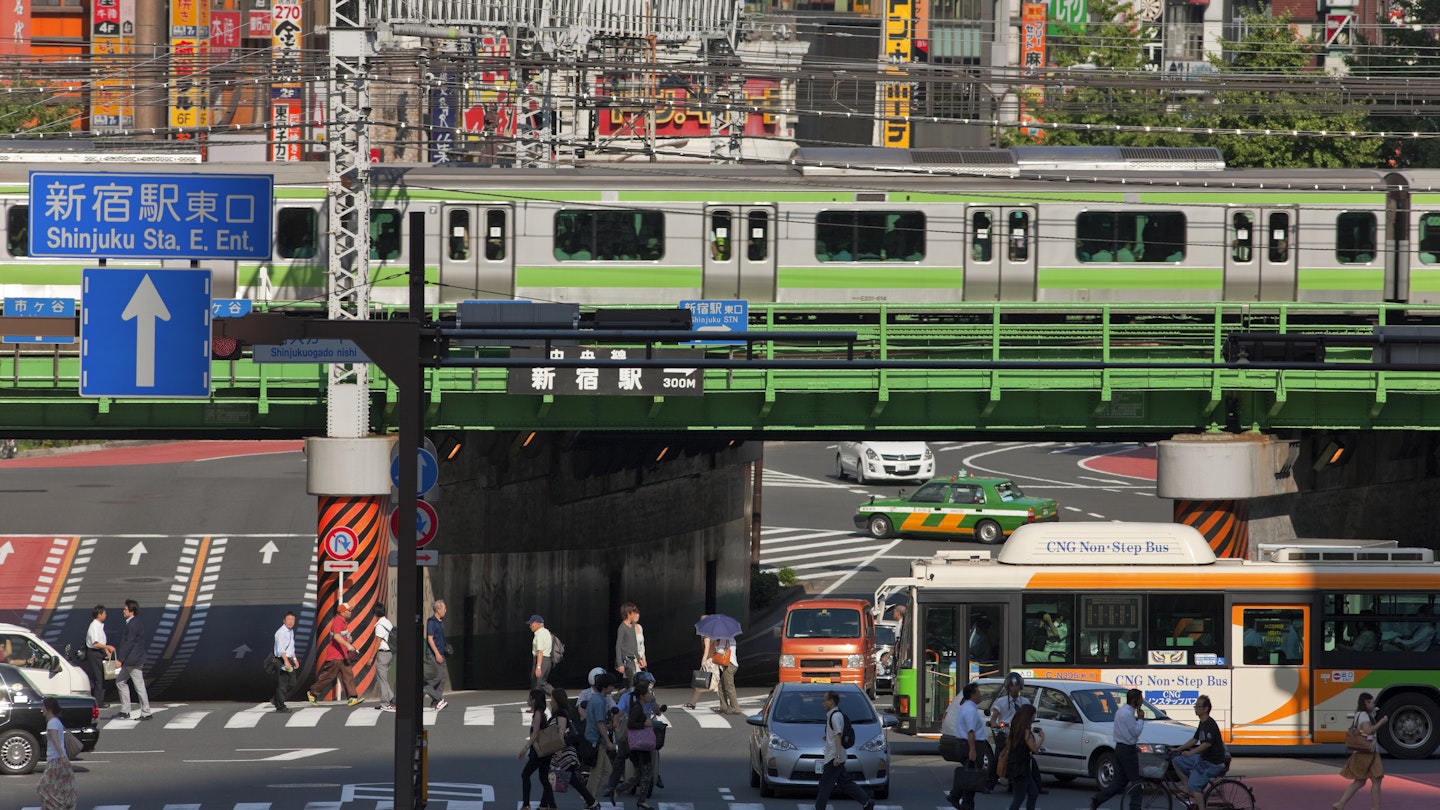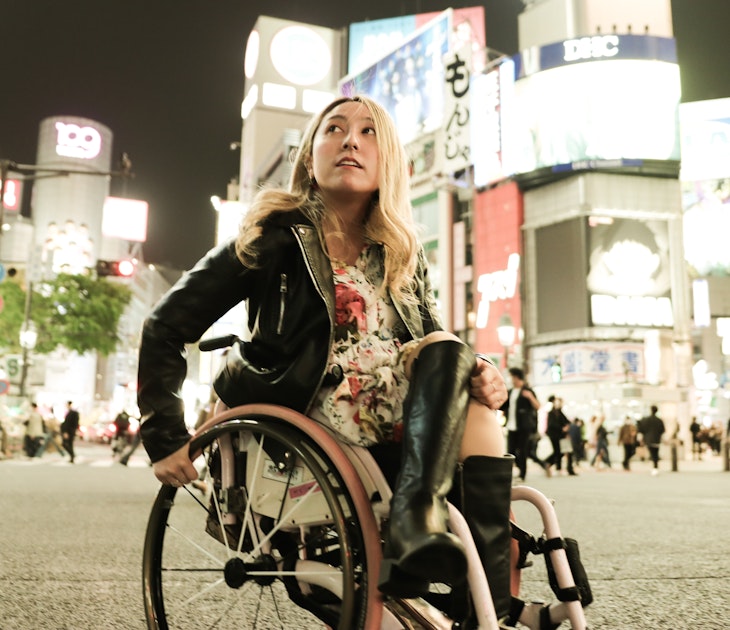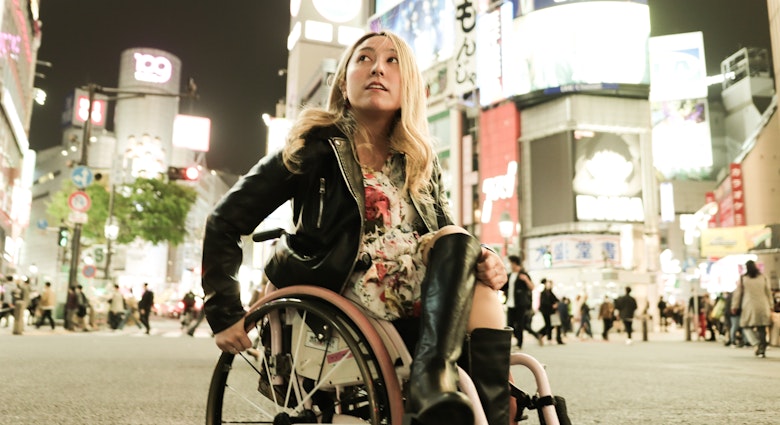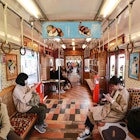Tokyo’s subway and train maps can look utterly impenetrable for the first time traveller or even a repeat visitor. But it’s very well signed in English, and once you understand how the system works it’s no more complicated than any other major world city’s public transportation — and it works a lot better than most.

Do consider staying on the Yamanote Line during your first visit
The first thing to do is to orient yourself: what most people would think of as central Tokyo is largely within walking distance of the Yamanote Line — the circular JR line that travels around central Tokyo — operated by JR East, Many if not most of the things that most first-time travellers to Tokyo want to see and do are either found on the Yamanote Line, or at most one easy connection from it.
Some of the smaller stops on the line have great local character and reasonably priced hotels close by, giving you a real feel for Tokyo. Otsuka is one of my favourites and comes with a bonus tram that trundles through central Tokyo, while Nippori has a lot of decent hotels and is very handy for the Keisei Skyliner fast train to Narita airport.
JR trains to Narita, and the Keikyu trains and Tokyo monorail to Haneda, also connect to the Yamanote. If you want to strike out further afield to Mt Fuji, Hakone or elsewhere in the Kanto region, all the major train termini are on the Yamanote as well.
Do stick to the trains and subways, and don’t freak out
Tokyo has a lot of train and subway lines, run by a lot of different companies and it can get confusing. For the most part, if you have a tap-to-pay card — see below — it’s really cheap (just a few hundred yen to go anywhere in central Tokyo) and it doesn’t matter what which company is running the line or whether it’s a subway or a train.
That’s true not least because some of the subway lines actually have commuter trains running through them, sometimes as expresses that don’t stop at every station.
This can be a little confusing, but the worst that will happen is that you’ll get on a commuter train by mistake, go whizzing past the station you wanted, and have to double back a couple of stops by crossing the platform and waiting for the next train.
For most travellers, unless you’re staying somewhere way out of central Tokyo, you won’t need to use the complicated bus network or most of the commuter trains.
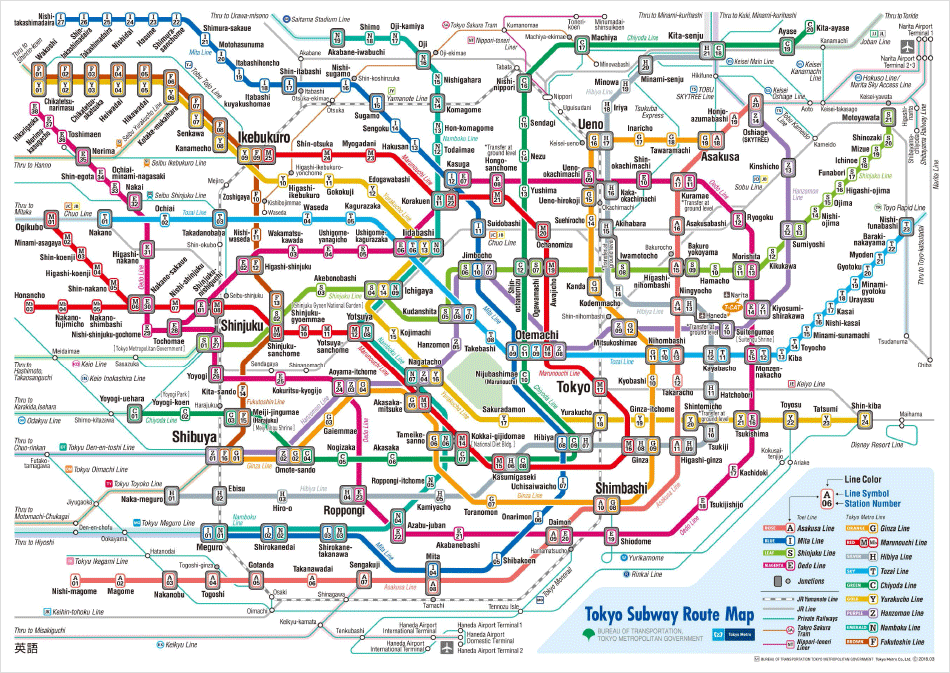
Do use Google Maps for routefinding
Over the last few years Google Maps has got even better for international tourists, with step-by-step guides that include information about how and where to transfer, with both English and Japanese writing in the app.
It’s pretty handy, and for most travellers it’s the best way to get around.
Don’t bring luggage, food or beverages
Tokyo’s public transport isn’t designed for luggage, especially suitcases. For your own sanity alone, don’t bring anything larger than a shoulder bag or backpack with you in rush hour, and nothing more than a small cabin bag with you in off-peak times.
Instead, use one of the takkyubin luggage services like Kuroneko Yamato, which will usually set you back only about ¥2000 or so. The exception is the Tokyo Monorail to and from Haneda Airport, so my trick if I have luggage is often to combine that with a taxi to my destination from Hamamatsucho, the monorail terminus in central Tokyo.
Alternatively, take the airport limo bus, or if there are more than two of you then a taxi can be a good deal too. Ask your hotel.
As a rule, don’t eat on any train that doesn’t have a table that you could use for eating, which mainly means long-distance services. Drinking is fine on the platform, usually next to a vending machine where you can also find recycling bins for your bottle or can.

Don’t miss your last train
Compared with some other world cities, Tokyo’s public transport ends early — the last trains on some routes are before midnight. The information is displayed on platforms, and you can also run a search on Hyperdia, Jorudan or Google Maps, using an arrival time of, say, 0300, to figure out your last connections.
(If you do miss the last train, the first usually start running shortly after 0500, so time for an all-night karaoke session, napping in a manga café, or even heading to a capsule hotel or business hotel.)
Don’t use your Japan Rail Pass
The Japan Rail Pass is great value for travelling between cities, but you won’t get great value out of using it within Tokyo. It’s also a bit of a faff: you have to show it at the staffed ticket windows rather than using the tap-to-pay gates, so you end up having to swim sideways against the flow of your fellow passengers.
And while there are 1, 2 and 3-day subway passes, I’ve never found these to be a particularly compelling buy compared with the pay-as-you-go Suica rate.
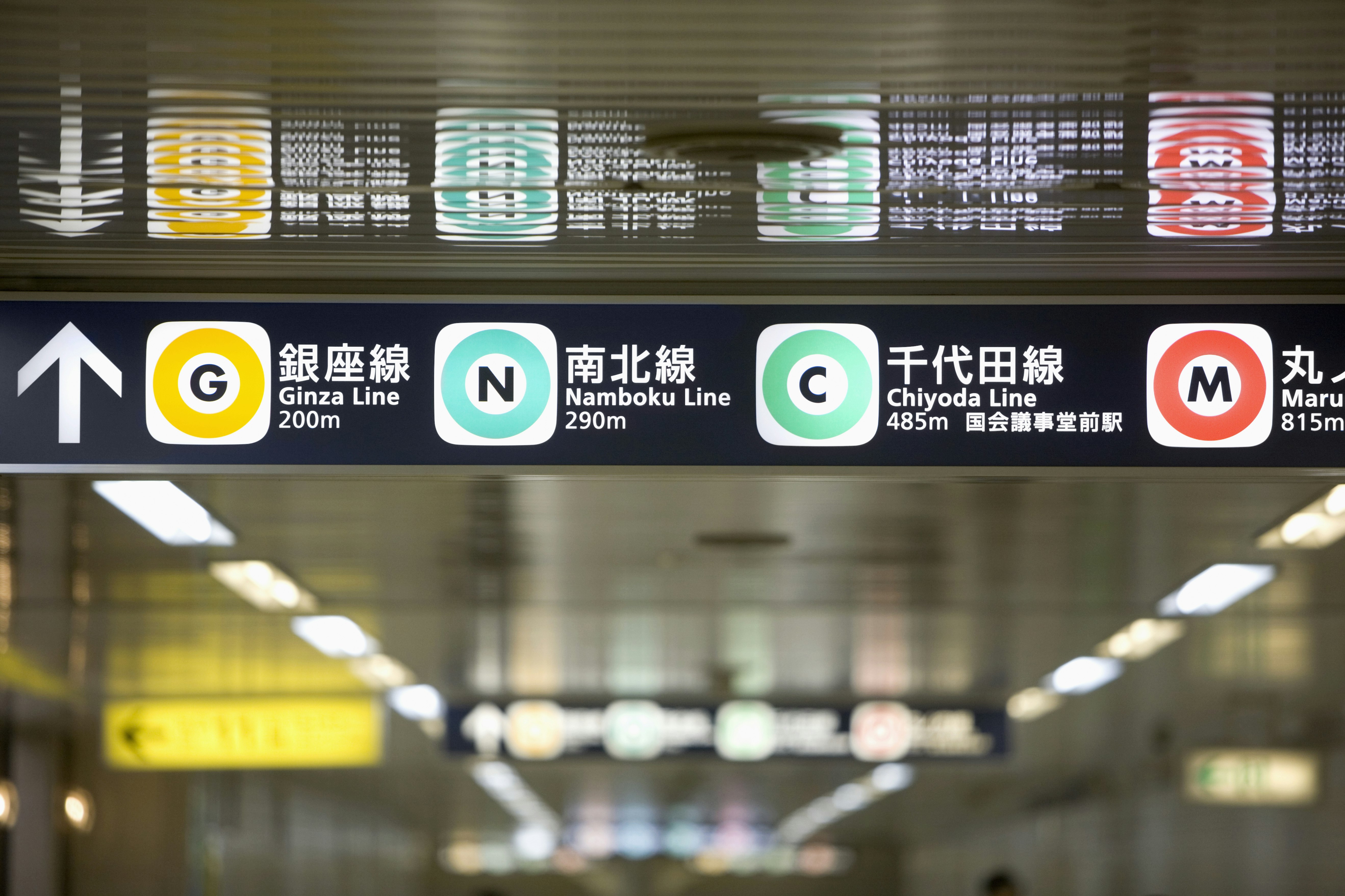
Do use a Suica or Pasmo tap-to-pay IC card
Japan has a nationwide network of tap-to-pay cards that are largely interchangeable between cities, and Tokyo’s JR version is called the Suica, while the private railways offer the Pasmo. It doesn’t matter which you get — they’re basically interchangeable.
An IC card like Pasmo or Suica works across the subway networks, JR trains, the Monorail… and in almost every shop in the city, which stops you from amassing a pocketfull of tiny plastic one and five yen coins.
You can buy a Suica in most major stations, but note that you need to pay cash for it. There’s a deposit of ¥500, which you get back if you return it on the way back out of the country, minus a ¥220 charge if you have a balance of over that amount left on the card.
Do get a Suica on your phone
Many modern smartphones with NFC functionality let you electronically load a Suica onto their payment wallets. This is a bit complicated, so have a look for guides online on how to do it. A bonus: you can add value to it via credit card on your phone, using Apple Pay or the equivalent.
Do have fun on the trains!
Taking public transportation anywhere can be an amazing window into real life wherever you are. Peoplewatch, stand at the front window of the train and look out with a driver’s eye view, and take a moment to listen to the sounds of Tokyo. It’s worth enjoying.
You might also enjoy:
Top 20 free things to do in Tokyo
How to spend a perfect weekend in Tokyo
Tokyo watchlist: films to see before your trip

